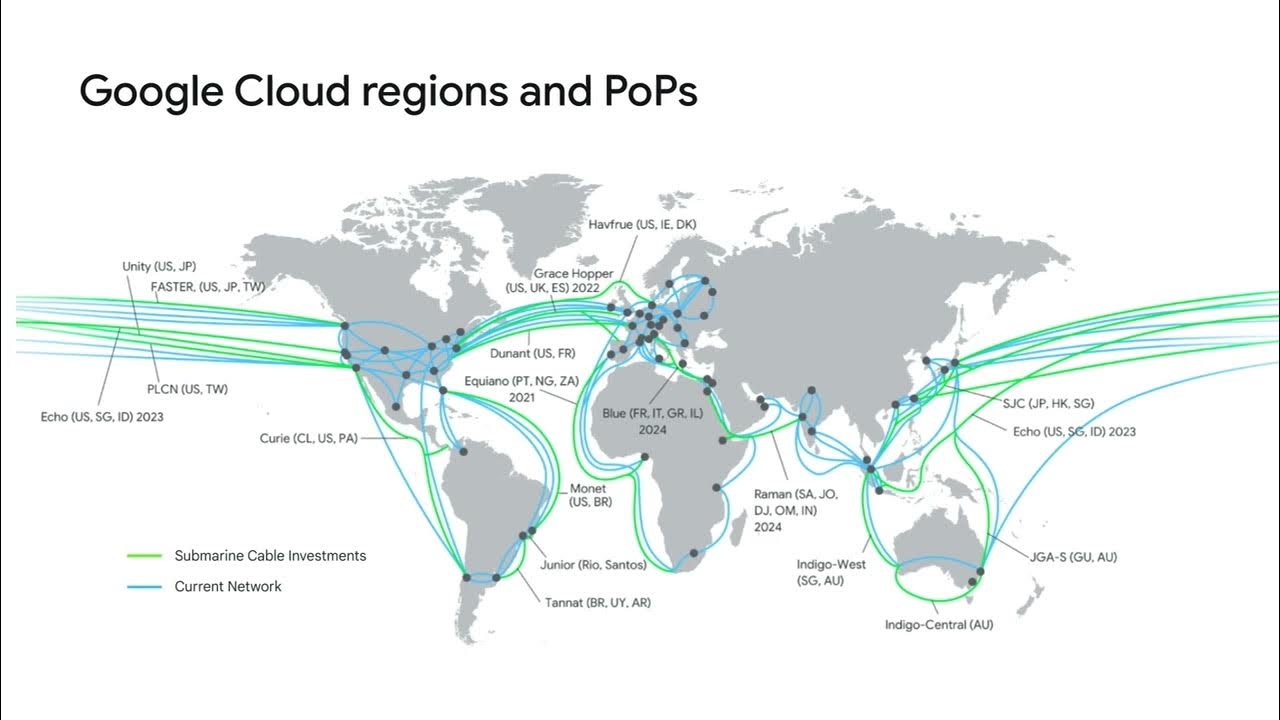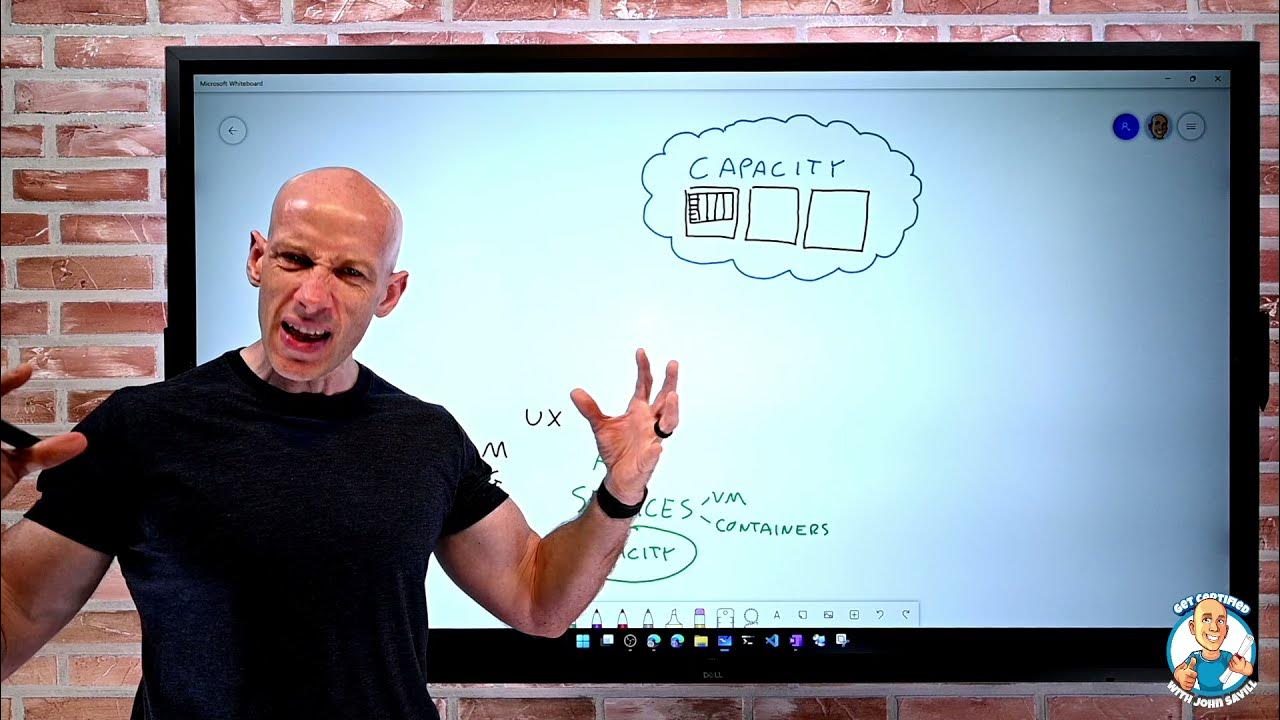Virtual Private Clouds (VPCs)
Summary
TLDRA Virtual Private Cloud (VPC) is a private cloud-computing model hosted within a public cloud, like Google Cloud, offering a blend of scalability and data isolation. Google VPCs are global, with the ability to create subnets in any region. These networks allow for segmenting, applying firewall rules, and forwarding traffic. There are two types of VPC networks: auto mode and custom mode. Auto mode provides predefined subnets in each region, while custom mode offers complete control over subnet creation and IP ranges. Custom mode is ideal for production environments, offering greater flexibility.
Takeaways
- 😀 A Virtual Private Cloud (VPC) is a secure, private cloud-computing model hosted within a public cloud like Google Cloud.
- 😀 VPCs combine the scalability and convenience of public cloud computing with the data isolation of private cloud computing.
- 😀 VPC networks enable communication between Google Cloud resources and the internet, supporting tasks like network segmentation and firewall management.
- 😀 Google Cloud VPC networks are global and can span multiple regions, providing flexibility in network design.
- 😀 Subnets within a VPC can span zones in a region, enabling resources in different zones to communicate within the same subnet.
- 😀 The size of a subnet can be adjusted by expanding its IP address range without affecting already configured virtual machines.
- 😀 Google Cloud offers two types of VPC networks: auto subnet mode and custom subnet mode.
- 😀 In auto subnet mode, Google Cloud automatically creates subnets in each region, using predefined IP ranges and default firewall rules.
- 😀 Custom subnet mode gives complete control over subnet creation, IP ranges, and allows for more flexibility compared to auto subnet mode.
- 😀 Auto subnet mode is ideal for isolated use cases like testing, while custom subnet mode is better suited for production environments.
- 😀 Once a VPC network is switched from auto mode to custom mode, it cannot be reverted back to auto mode.
Q & A
What is a Virtual Private Cloud (VPC)?
-A Virtual Private Cloud (VPC) is a secure, individual, private cloud-computing model hosted within a public cloud like Google Cloud. It allows customers to run code, store data, host websites, and more, just like in an ordinary private cloud, but hosted remotely by a public cloud provider.
What are the advantages of using a VPC?
-VPCs combine the scalability and convenience of public cloud computing with the data isolation of private cloud computing, offering enhanced security and flexibility.
What is the role of VPC networks in Google Cloud?
-VPC networks connect Google Cloud resources to each other and to the internet, enabling tasks like network segmentation, firewall rule application, and the creation of static routes for traffic forwarding.
How are Google VPC networks structured?
-Google VPC networks are global, meaning they can span multiple Google Cloud regions. Within these networks, subnets can be created in different regions, and resources can exist across different zones within a subnet.
What are subnets in a VPC?
-Subnets are segmented pieces of a larger network within a VPC. They can span across multiple zones within a region, and their IP range can be expanded without affecting already configured virtual machines.
What is the difference between auto subnet mode and custom subnet mode in VPC networks?
-In auto subnet mode, Google Cloud automatically creates subnets in each region, using predefined IP ranges. In custom subnet mode, users have full control over subnet creation and IP range assignments, offering more flexibility for production environments.
How does expanding the size of a subnet work in Google Cloud?
-The size of a subnet can be increased by expanding its allocated IP address range. This operation does not affect the virtual machines already configured within the subnet.
What are the key benefits of using custom mode VPC networks?
-Custom mode VPC networks provide complete control over subnet creation, IP ranges, and network configuration, making them more flexible and suitable for production environments.
Can you switch a custom mode VPC network to auto mode?
-No, once a VPC network is switched from auto mode to custom mode, the conversion is one-way, and it cannot be reverted back to auto mode.
What is the purpose of predefined firewall rules in auto mode VPC networks?
-In auto mode VPC networks, predefined firewall rules are automatically applied to ensure a basic level of security. These rules can also be modified or added to as needed.
Outlines

This section is available to paid users only. Please upgrade to access this part.
Upgrade NowMindmap

This section is available to paid users only. Please upgrade to access this part.
Upgrade NowKeywords

This section is available to paid users only. Please upgrade to access this part.
Upgrade NowHighlights

This section is available to paid users only. Please upgrade to access this part.
Upgrade NowTranscripts

This section is available to paid users only. Please upgrade to access this part.
Upgrade NowBrowse More Related Video

What Is Cloud Bursting, and Why Is It Important? Hybrid cloud

The Google Cloud network

What is a Virtual Private Cloud?

Cloud Computing Deployment Models - Private Cloud, Hybrid Cloud, and Multicloud

Identify the Benefits of Cloud Computing - AZ-900 Certification Course

Cloud Computing In 6 Minutes | What Is Cloud Computing? | Cloud Computing Explained | Simplilearn
5.0 / 5 (0 votes)